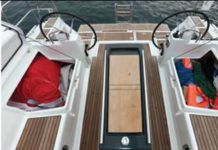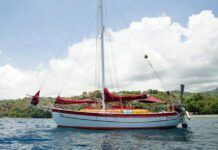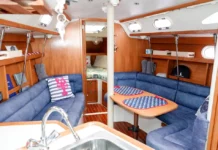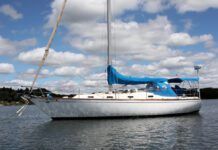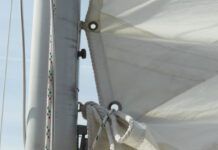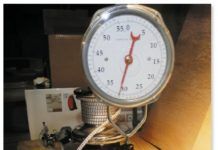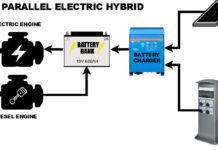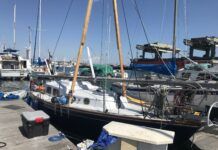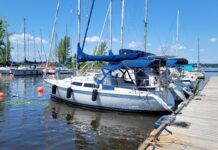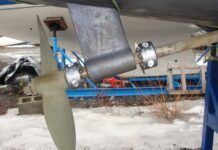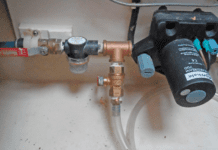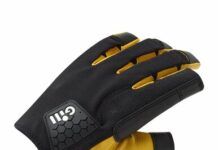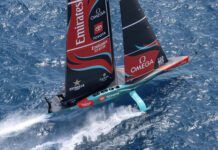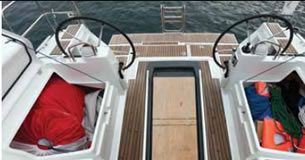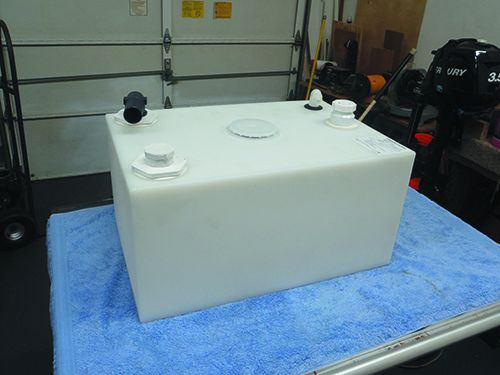
Let’s assume we have a Raritan Electro Scan plumbed between our head and a thru-hull. We don’t have a holding tank, but now we’re going to need one, because we can’t discharge at the dock. What are our options?
In most NDZ situations, shortly after leaving the dock we will be outside the NDZ and can operate our flow-through, Type I or II MSD. In a few more miles we will be outside the declamation line and can discharge untreated sewage. We really only need a holding tank for use at the dock.
In many lakes, rivers and the Puget Sound, we may very seldom or never leave a NDZ. We might as well just have a holding tank and work pump-outs into our schedule. Or in the case of the Chesapeake Bay, the NDZs are small, but the entire estuary is inside the 3-mile declamation line. We’re going to need enough holding tank capacity to serve while at the dock or in harbor, but we can treat through the Type I MSD once in the main Chesapeake Bay.
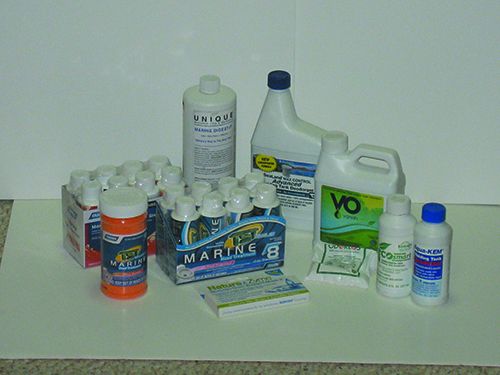
Holding Tank. The tank must be located before the Type I MSD because we can’t hold the waste after treatment. Although chlorine-treated, the effluent is not sterile and will go septic after sitting for a time. We have three options:
- Raritan Hold-N-Treat. This upgrade includes a 15- gallon holding tank. When activated, a transfer pump treats the waste through the Electro Scan one batch at a time. While we are within an NDZ a switch allows we to disable the processing unit. Fifteen gallons should be enough for overnight, and it can be plumbed for deck pump out. This is a good solution if we don’t live at the dock.
- Holding tank after the head. This system, fitted with a Y-valve to select between holding and treatment, is a good solution if we will be heading offshore and don’t care to treat all of our gallons through the Electro Scan.
- Holding tank between the head and the Electro Scan. Sensors attach to the holding tank, and like the Hold-N-Treat, a transfer pump allows us to treat the waste one batch at a time. Contact Raritan for the particulars of connecting the sensors to our existing Electro Scan. Older units may need updating first. This is a good solution for boaters that spend significant time at the dock and don’t often see the ocean.
Salt System. Remember, the Electro Scan MSD requires 50 percent salinity or be provided with a saltwater feed tank and system. Typically, a 2 or 4-gallon tank and feed system is required. Fail-safe monitoring that is built into newer models will trigger a “low electrode amps” warning or error when salinity is too low.


